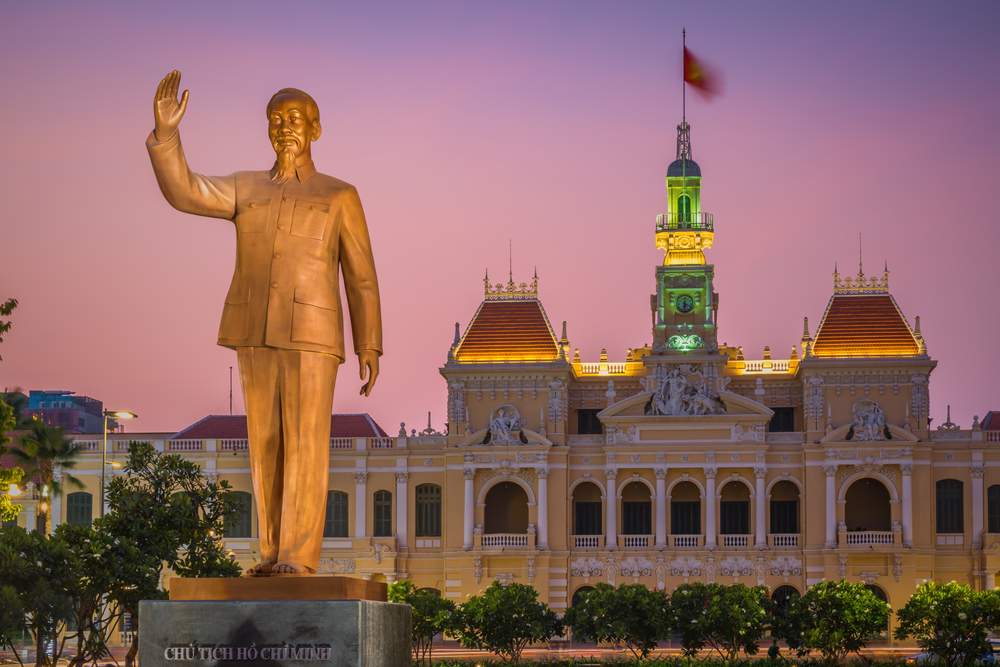It’s a fascinating metropolis of many different flavors – all of which must be experienced. One of the high points is that in the town itself, most attractions are within walking distance to each other.
Must-sees in Ho Chi Minh City

The absolute must-see in Cholon is Benh Thanh Market , a bazaar that can be as bizarre as it is exciting to the foreign eye. Watch locals haggle over the price of live chickens and rice, while you consider buying a funnel-shaped rice hat (don’t be such a cliché) and postcards.
The Cu Chi Tunnel Complex – it isn’t exactly in town, but it’s only a two-hour drive from the city and well worth the trip. The tunnels comprise an elaborate underground maze created by the Viet Cong during the war.
Here, soldiers worked, ate, planned, and lived their lives entirely in a space barely a meter high and no more than 80 centimeters wide. Visitors can crawl into the tunnels to get a taste of what it would’ve been like to exist in this surreal subterranean labyrinth.
Tours through and around the tunnel sections are open to the public and are guided – necessary because of the booby traps – gruesome-looking contraptions with long metal spikes. Tourists also have the opportunity to fire an AK-47 rifle; a rather authentic experience, if an unsettling one. Friendly guides on site are very willing to answer questions – all guides are connected to the tunnel complex in some way, many were actually born in there. Above-ground, the shady woodlands provide a nice reprieve from the city’s hustle and bustle.

Vung Tau – once the premier beach retreat in Vietnam, Vung Tau is a long-standing port that still attracts many visitors with its sandy shores and tranquil waters – even if they’re not as pristine as the old days.
Only 75 miles from Saigon, the peninsula of Vung Tau offers five beaches, each with unique qualities. Bai Trouc is well-developed and has an array of restaurants, shops and hotels, while Vong Nguyen is popular among surfers.
Giac Lam Pagoda located near Dam Sen Park has architecture dating back from the 19th century Nguyen Dynasty. It’s the oldest Pagoda standing in the country. There are over 150 statues inside the compound. At the entrance, decorous, austere tombs sit next to the looming Goddess of Mercy, Quan Thew Am Bo Tat.

Have you been to Ho Chi Minh City? Do you have any must-sees to add to the list?
To read more about Ho Chi Minh, Vietnam and round-the world-travel, check out the following articles:
- Vietnam Indie Travel Guide
- Ho Chi Minh City Indie Travel Guide
- Lessons from Around the World: 11 Skills to Learn on Your RTW Trip
Photo credits: shutterstock.com, Claudiovidri / shutterstock.com, Bule Sky Studio / shutterstock.com, John Bill / shutterstock.com, O lympus
